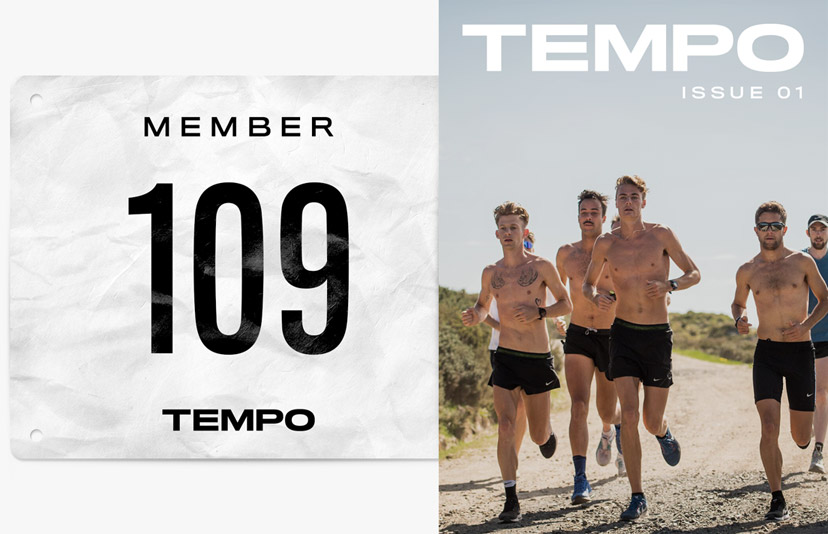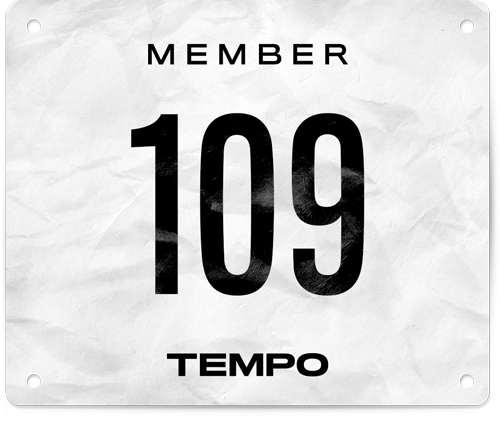Performance
What’s next for the Sydney Marathon?
Unpacking the big announcement
You may have seen the news last week that the Sydney Marathon has been announced as a candidate to become the newest World Marathon Major, alongside the six established races in Tokyo, Boston, London, Berlin, Chicago and New York.
“The majors”, as they’re known, are the pinnacle of marathon running. For elites they represent (mostly) the biggest paydays, the best competition and the brightest stages in distance running. For amateurs, they remain bucket-list items. Most marathoners dream of going to Boston or New York, or any of the others.
It’s a massive announcement for Australian running and one that we should all be excited about. Having a major in our backyard means the world’s best marathoners coming to race, a much-improved race-day experience for all participants and global media coverage, to name just a few of the advantages.
Event organisers will be looking for a course that shows off the best of Sydney: the bridge and the Opera House will play central roles, but so might places such as Bondi Beach. The thing that will test them in the course design will be to avoid too many sharp turns and repeated sections.
Riley Wolff
It’s important to note, however, that there’s a lot that needs to be done if organisers are to realise their dream and have Sydney accepted as the next major. History is littered with examples of cities that couldn’t meet the criteria, and it’s also worth noting that Sydney isn’t the only candidate to become the seventh. Both the Cape Town Marathon in South Africa and the Chengdu Marathon in China are candidate races, while Singapore was previously on the list but was removed in 2021.
Organising body Abbott World Marathon Majors has said it’s looking to add a seventh major in 2025, which gives Sydney less than three years to tick a lot of boxes. The criteria are somewhat opaque but are centred on participation, organisation, certification, sustainability and legacy.
The Course
This is the natural one people look at, and it’s an obvious place to start for organisers. The current Sydney Marathon course is underwhelming, despite some obvious advantages. The race starts with a run over the Sydney Harbour Bridge, an element that would be enormously popular with tourists and global media. So you can bet the bridge will remain in some capacity. It also currently finishes at the Sydney Opera House – again, you can bet the Opera House will remain but, purely in the interests of crowd control, I can’t see it being the finishing point.
The rest of the course is best described as uninspiring, with a big, overly complicated lap of Centennial Park one of the lowlights, as are the long stretches of out-and-back running. While generally it’s fine, it’s not what anyone would expect from a World Marathon Major.
Thankfully, Sydney is one of the most beautiful cities in the world, so designing a new course shouldn’t be difficult. And while, yes, it’s a hilly place to run, so are New York and Boston.
In my mind, event organisers will be looking for a course that shows off the best of Sydney: the bridge and the Opera House will play central roles, but so might places such as Bondi Beach. The thing that will test them in the course design will be to avoid too many sharp turns and repeated sections. Chicago does it well – its course is a series of loops away from and then back towards the downtown area, but the Windy City is also blessed with a completely flat course and plenty of bridges across the water.
In Sydney, I don’t think a point-to-point race is feasible, so there will be some element of U-turns and out-and-backs, but minimising it and keeping the course interesting will be the test.
There are also practicalities at play when you’re designing a course for a major. The Sydney Marathon had 4,484 finishers in 2019. The smallest World Marathon Major by participation, Boston, had over 26,000. Finding a place to start all those runners can be a challenge - maybe the race starts somewhere like Centennial Park, rather than looping it midway through the race.
Participation
This is going to be a big one; redesigning a course is relatively straightforward, but increasing participation isn’t so easy. To paint a picture of the current situation, the Sydney Marathon isn’t even the biggest marathon in Australia: in 2019 it had 4,484 finishers. The Gold Coast Marathon had 5,776 and the Melbourne Marathon had 7,026.
In terms of the current World Marathon Majors, the smallest of them is Boston, which had 26,632 finishers in 2019. (The same year, Tokyo was next smallest with 35,803; before the pandemic, London and New York City had around 42,000 and 53,000 participants respectively.)
For reference to the other candidates, in 2019 Cape Town had 6,012, while Chengdu had entry capacity for 30,000 (race results are hard to find).
So we know Sydney is going to have to beef up its participant numbers significantly. Some of this will come naturally now the candidacy has been announced, but not 15,000 new entrants. Achieving big local participant numbers in 2023 will be key; it’s a fallacy that any event can rely on thousands upon thousands of tourists just showing up. Sure, some will, but it’s more efficient to focus on converting the domestic runners to run Sydney than it is to hope 10,000 runners from Japan and China will come.
And remember, organisers need to boost participant numbers before they’re accepted as a major; they can’t rely on ”well, once we become a major people will show up” – they need to prove it ahead of that.
What sort of finisher numbers should organisers be targeting? It’s not feasible to turn this into a 30,000-participant event in a couple of years, and that shouldn’t be the goal. But I’m sure the powers that be will want to see north of 10,000 finishers in 2023. I’m not sure what entrant numbers are like for this year but, assuming 7,000 (which would be big) cross the line in 2022, it’s still a significant jump. Yet that’s the first step: establish the Sydney Marathon as far and away the biggest marathon in Australia.
Right now, Australian runners largely have the three aforementioned marathons to choose from in the back half of the year. People choose Gold Coast because it’s flat and fast, it’s a welcome break from winter in other states and, after summer dies down and real training begins, it’s the first cab off the rank.
People choose the Melbourne Marathon because Melbourne is undeniably the home of Australian running (I will die on this hill), and for most of us it requires no travel. The course is relatively flat and the city is easy to navigate.
People choose Sydney because it’s there, but it’s known as “the other marathon”. It’s not a fast course, it’s not a terribly fun course, and it’s at a terrible time. It’s not currently a destination marathon – that’s something that will obviously change with this candidacy, but does that mean people will forfeit Gold Coast and Melbourne in favour of Sydney?
Timing
This brings us to the timing of the event. With the Gold Coast Marathon in July and Melbourne Marathon in October, having the Sydney Marathon in September doesn’t seem to make sense, for some of the reasons already outlined.
Looking at the timing of the current majors, it makes little sense to keep it where it is if you’re trying to attract the best runners in the world. Berlin is late September (arguably the fastest course in the world), and Chicago is early October, while New York City is in November - basically this means it’s an either/or situation for world-class athletes. There’s no realistic way to run Sydney and another of the majors in the back half.
The way elite athletes currently split out that back half of the year is this: the runners wanting to run really quick go to Berlin, Chicago emphasises getting fast Americans and New York City is the destination race for anyone wanting to make a name for themselves (and avoid the carnage of Berlin). That’s not to say Sydney has to be all about the elites, and there’s an element of “if you build it, they will come”, but piling on another marathon in the middle of a busy calendar just doesn’t seem to make a lot of sense, especially when you’re trying to build a name for your event.
The best spot on the global calendar for the race might be June to July. Elite marathoners could run a mid-year marathon and still back up for New York City, and some could compete in Tokyo early in the year and back up for Sydney. But of course, this would require Sydney going head-to-head with Gold Coast, and I get the feeling they’re going to need all the local participant numbers they can get.
Earlier in the year makes some sense. I’ve long said Australia needs a good marathon earlier in the year - we all train over summer but there’s not a viable marathon until Gold Coast (Canberra in April has never really gained traction at a mass level). So, could Sydney move to March? It would then compete with Tokyo, Boston and London, which is better than the back half alternative.
Tokyo hasn’t historically attracted the same pool of elites as other races, for whatever reasons. London pays significant appearance fees to get the fastest line ups, but the opportunity of a March marathon might be getting athletes who ran any of the Berlin, Chicago or New York City races.
Why do elites matter so much? For a race to achieve the right label or certification, it has to have a certain number and quality of athletes. If Sydney can’t attract enough global talent, it will risk being downgraded in terms of certification. The most common way to deal with this is to pay high prize money (and in some cases appearance fees). Paying out a lot of money relies on bringing in a lot of money, which comes from getting 20,000-plus runners all paying $200-plus to run the race.
Obviously, March has its own issues around the weather, but there’s no perfect time. It’s a tough one for the organisers, but I just can’t see them keeping it in September.
So What’s Next?
It’s hard to know. Organisers will be pulling out all the stops to make next month’s edition as big as it can be – you’ll see better coverage, higher quality athletes and better participant services, for sure. There’s little they can do at this late stage to boost participant numbers, but I’m sure work is happening behind the scenes to align with local running communities (PS: If anyone from the race reads this, I am planning to apply for media accreditation so please don’t block me.)
2023 will be telling. I would hope there’s a complete rebrand and refresh of everything that’s public facing; right now, Melbourne and Gold Coast lead the way when it comes to positioning their events. The current website for Sydney is a mess, with heavily pixelated imagery and gaps in information that could be easily remedied but which are, for the moment, most people’s first touch point with the race.
Sydney will need to start its event promotion early in the year, before people commit to running Gold Coast. I would be wanting to see a big announcement in February or March at the latest.
It’s worth reiterating that candidacy doesn’t guarantee acceptance – this is an enormous project and a huge challenge for the Sydney Marathon. And, to be clear, I couldn’t be more excited for it. I’m disappointed for Melburnians because I think we have the community and the city to have a world-class marathon, but I’m optimistic for what’s ahead for Sydney and for Australian running in general.


